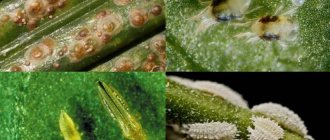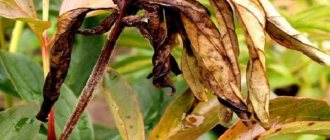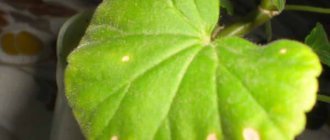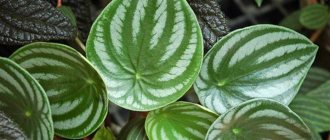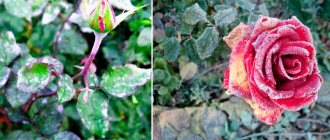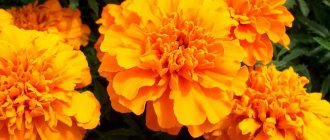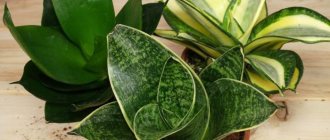Treatment of the garden against pests and diseases of vegetables
When fighting pests, plant diseases and weeds, it is important to apply fertilizers in a timely manner, properly cultivate the soil and thoroughly weed the crops.
Fertilizers. The application of organic and mineral fertilizers when treating the garden against diseases and pests promotes the formation of seedlings that are more resistant to damage. When using fertilizers that accelerate the growth of seedlings, there is a mismatch between the development of plants and pests, so the pests die or their harmfulness is reduced.
Feeding with phosphorus and phosphorus-potassium fertilizers during the period when insects lay eggs significantly reduces the number of pests and their harmfulness.
In addition, insect control can be carried out using various fertilizers. Superphosphate is effective against slugs, ammonia fertilizers help get rid of wireworms.
Phosphorus fertilizers increase the physiological stability of plants. Phosphorus and potassium help strengthen the tissues of stems and leaves, which makes it difficult for pests to feed and increases plant resistance to various diseases.
One of the means of combating plant diseases is mineral fertilizing in combination with the application of organic fertilizers. This protects against disease and impairs the feeding of aphids and other pests. An excess of phosphorus inhibits the vital functions of insects, and an excess of nitrogen promotes the formation of wider leaves in plants, the accumulation of water and carbohydrates, so such crops, on the contrary, become more attractive to insects.
Tillage system. An effective agrotechnical method of combating plant diseases is proper and timely tillage.
The soil is a habitat for many pests that live in it constantly and during certain periods. When cultivating the soil, the larvae and pupae of pests end up on the surface, where they are destroyed by other insects or insectivorous birds or die from sudden changes in temperature and humidity. Many larvae die from mechanical damage during soil cultivation.
It is especially important to cultivate the soil in spring and autumn
How to apply fungicides
Fungicides are necessary for the prevention and treatment of fungal infections and various rots and are divided into contact, systemic and systemic-contact. The most accessible and easiest to use are contact fungicides , which protect plant tissues from infection and do not accumulate in plants: vitriol, copper and iron. Copper sulfate and quicklime are the main components of the Bordeaux mixture, which at a concentration of 1% can be used throughout the growing season. Also contact fungicides include the preparations “Abigapik”, “Hom” (copper chloride).
Systemic fungicides are able to move throughout the plant, increasing its resistance to disease, suppressing pathogens in the early stages of their development. Such drugs include “Topaz”, “Skor”, “Topsin-M”, “Fundazol”.
There are drugs with systemic contact action : “Oxychom”, “Ridomil Gold”, “Tiovit Jet”, “Raek”.
biologically based products (biofungicides) on the market : Fitosporin, Fitolavin, Alirin B, Gamair, Glyokladin and Trichodermin (the latter two are used mainly to suppress fungi in the soil). It has been established that pathogens of fungal diseases are able to adapt to frequently used drugs, so the drugs need to be alternated.
Illustrations for the material: Yulia Astanovitskaya, Anna Bershadskaya, Joseph Kaurov, Oksana Kapitan, Alexandra Kirillina
Fruit tree diseases
How to identify and treat diseases of indoor plants
Various diseases significantly reduce productivity. Severely weakened plants may even die. That is why fruit trees must be treated from pests and diseases in a timely manner.
In addition, it is very important to follow preventive measures and rules of agricultural technology for fruit crops
To combat diseases and pests of fruit trees, we use various fungicides and insecticide preparations, which we dilute in water before the process itself according to the recommendations in the instructions attached to them. Next, we will consider what diseases there are in fruit trees.
Plant diseases. milky shine
Signs: The disease affects many fruit trees. With it, a silvery coating appears on the leaves. The top skin is easily removed. When cutting branches of a diseased plant, the cut wood has a brown or purple tint.
Control measures: cut off diseased branches 10–15 cm below the darkened wood. We treat the cuts with garden varnish.
Plant diseases. Moniliosis
Signs: This fungal disease can occur in most trees. Brown spots with concentric circles of white sporulation appear on the fruits.
Control measures: burn diseased fruits. We spray the plants with Planriosis (50 ml/10 l of water) every 10 to 15 days.
Plant diseases. Leaf curl
Symptoms: This fungal disease appears on peaches and nectarines. The leaves are deformed. Brown bubbles appear on them. The disease affects fruit trees before buds open.
Control measures: destroy diseased leaves. We treat plants with Bordeaux mixture before buds open, after harvesting and before leaves fall.
Plant diseases. Scab
Signs: This fungal disease develops on apple and pear trees. Signs of its appearance are olive spots on the leaves and brown scabs on the fruits.
Control measures: we regularly spray the trees with Kaptan, Skor, Horus, Sistan, Benomil, Integral, Ditan, Rubigan. We burn diseased leaves in a timely manner. At the beginning of the growing season, we treat the plants with 1% Bordeaux mixture. Spray the root circles with 10% ammonium nitrate. We treat the trunks and skeletal branches with lime milk (1 kg of lime/10 l of water).
Plant diseases. Stone fruit hole spot
Signs: This disease can appear on plums, peaches, cherries and cherries. It causes holes and dark spots to form on the leaves.
Control measures: regularly water and fertilize trees. We spray the plants with copper-containing fungicides.
Plant diseases. Bacterial cancer
Signs: the disease develops on cherries, cherries, and plums. With it, oblong growths form on the trunk of fruit trees, from which gum oozes. With this disease, the leaves quickly wither.
Control measures: cut off the branches in the summer. Spray the affected plants with Bordeaux mixture.
Plant diseases. Fruit tree cancer
Signs: This fungal disease affects the trunks and branches of apple and pear trees. With it, elliptical growths appear on trees, causing the bark to dry out.
Control measures: cut out the diseased parts with a sharp knife. We carefully treat the resulting wounds with garden varnish. We spray sick trees with Benomyl and 1% Bordeaux mixture.
Plant diseases. Splitting the bone
Symptoms: This disease can occur on peaches and nectarines. In this case, the seed of the fruit splits along the seam, and then the fruit also cracks.
Control measures: regularly fertilize, water and mulch trees. If there is acidic soil, we liming it.
Plant diseases. Cytosporosis
Signs: This disease affects apple trees. A sign of its appearance is the peeling of pale brown thin layers of bark throughout the growing season.
Control measures: cut out dead shoots in a timely manner, destroy rotting plant tissue, cover the wounds formed on the tree with garden varnish.
Plant diseases. Bitter pitting
Signs: the disease develops on apple trees. Brown spots form on the pulp and peel of the fruit.
Control measures: feed and mulch the plants in a timely manner. In June, we spray the trees with calcium nitrate (4 tablespoons/11 liters of water). We re-process the apple trees after 3 weeks.
Plant diseases. Sooty fungus
Signs: an easily erasable black fungal coating appears on the shoots and leaves.
Control measures: spray the plants with a copper-soap solution (5 grams of copper sulfate, 150 grams of soap/10 liters of water), 1% Bordeaux mixture, copper oxychloride. We thin out thickened crowns of fruit trees in a timely manner.
Moniliosis, or gray fruit rot of stone fruits
Dangerous disease. The causative agent of the disease is a fungus. Affects plums, apricots, cherries, and cherries. Leaves, flowers, fruits, shoots are sick.
The mycelium overwinters in affected shoots and fruits on the tree and on the soil. In the spring, during the flowering of stone fruits, the fungus produces many spores, which, falling on the flowers, infect them. Through the flowers, the fungus quickly penetrates into the branches and leaves. Sick flowers and the leaves closest to them dry out, but do not fall off. The branch on which they hang also dries up. The branch appears to have been burned by fire, which is why this form of damage is called monilial burn. The affected organs of the tree are covered with pads of fungal spores and are a source of spread of the parasite until autumn.
Fruits are affected by the fungus before and during ripening. First, a brown spot appears on the fruit, and the tissue underneath softens. The spot of rot increases rapidly, and soon the Fruit rots. Randomly scattered pads of fungal spores appear on its surface. A certain number of diseased fruits fall to the ground, and most of them mummify and remain on the tree. In spring they are the main source of infection. Fruits become infected through mechanical damage to the skin or through contact with diseased fruits. Infection of fruits is facilitated by heavy rains and fogs, as well as damage by insects, primarily goose.
From the affected shoots, the fungus penetrates into larger branches, on the bark of which cracks and wounds appear with gum flowing out of them. The affected bark dies, which often leads to the drying out of the entire branch. Sporulation of the fungus also develops on the large bark.
The disease can lead to severe depletion of the tree, cessation of fruiting and premature death. Apricot suffers most from moniliosis, cherries suffer less, and plums and cherry plums suffer less than others.
Control measures. Cutting and destroying diseased branches and shoots soon after flowering. In summer - systematic collection and destruction of fallen affected fruits. In autumn, cutting and destroying branches that died over the summer, collecting from branches and destroying mummified fruits. Spraying trees with 1% Bordeaux mixture before flowering and immediately after flowering. Spraying with 3% Bordeaux mixture during the “green cone” phase.
Caterpillar pests
All pests and diseases of roses and how to fight themRoses pests and diseases Powdery mildewRed spider miteRustLeaf-eating beeLeaf rollersBronze and fawnAphid Foamy cuckoo's droolGrey moldCaterpillars, slugs, snailsCancerFox spotting
Among garden plant pests, caterpillars occupy the first place. Firstly, almost every representative of their large family is already a pest, since they feed mainly on leaves and fruits. Secondly, pest caterpillars have good camouflage skills, so that only the result of their work remains noticeable. And these are gnawed leaves, bitten flower petals and a withering plant.
Foam slobber
slobber
This is a butterfly that, being in the larval stage, causes significant damage to plants. She likes to settle in the axils of leaves, or on their reverse side. The size of the larva is very small, only about 5 mm, but what gives the slobber is its habit of leaving foamy secretions, by which it can be easily recognized. The occupied leaves gradually curl and die, the plant does not bloom and loses its beauty.
At risk: ornamental shrubs, especially roses. macro
leaf roller
leaf roller
The most frequent guest in the garden. This leaf-sized green caterpillar has a "vegetarian" diet and feeds primarily on foliage. There are subspecies of caterpillars that feast on certain types of plants, such as roseate budworms. Future butterflies easily identify themselves by the characteristic leaves rolled into a roller, in which they live. If the leaf is disturbed, the caterpillar can escape by climbing down a thin web.
At risk: ornamental shrubs.
Sawfly
sawfly
Another dangerous and very insidious pest for plants. The essence of his cunning is that he destroys the plant not from the outside, but directly from the inside, gnawing tunnels for himself inside the stems. As a rule, it prefers woody shrubs. If the branches on a rose bush suddenly change color, become lifeless and dry out, if you break a shoot, you will probably see a sawfly tunnel inside. It itself is a white larva about 2 cm in size, which hides in the soil in winter and occupies nearby territories in spring.
At risk: ornamental shrubs, including roses, rose hips, hydrangea, etc.
Wireworm
wireworm
This is a summer resident’s “horrible dream”, a click beetle larva that looks like a piece of wire. The beetles themselves are not as dangerous as their larvae. Being in “childhood” age, these malicious pests cause significant damage to dacha farming, eating underground parts: tubers, bulbs, root crops, destroying ornamental plants and spoiling the harvest. How to get rid of wireworms on your property? It is quite difficult to drive it away; it is easier to prevent its occurrence - read the “prevention” paragraph below.
At risk: tuberous and bulbous crops.
Apple powdery mildew
The fungus attacks the leaves, shoots, flowers and fruits of apple trees and sometimes pears.
The disease appears soon after the buds open.
The mycelium overwinters in the buds, on affected branches, and sometimes on leaves. In spring, the mycelium moves from the buds to the budding leaves, flowers, and shoots, where it forms conidia that are distributed by the wind. In the fruiting bodies (perithecia) that have overwintered on the branches, sacspores develop, which are released after rain and infect other plants.
A white felt coating of mycelium with numerous black dots of fruiting bodies appears on the affected parts of plants. Affected shoots are stunted in growth, their tops dry out, leaves curl and die. Diseased fruits are stunted in growth, often fall off, and rusty mesh and cracks appear on their skin.
Dry and hot weather contributes to the development of the disease. In winter, at a temperature of -20... -23° C, the mycelium dies. Varieties susceptible to the disease: Renet Simirenko, Jonathan, Mekintosh.
Control measures. Pruning and destroying affected shoots in autumn or early spring. Timely watering and tillage. The gardener should avoid applying large doses of nitrogen fertilizers. It is recommended to spray plants with azocene or colloidal sulfur. If the disease develops significantly, spraying is carried out at least three times: during the release of buds, immediately after flowering (75% of the petals fall off), the third time - two weeks after the second.
Plant diseases. Protecting fruit trees from spot diseases
Preparing ornamental plants for winter
Brown spot. This disease of fruit trees is widespread and has two waves of development - early spring and autumn. In summer, during drought, the disease subsides, but does not disappear. Red-brown spots of a round, vague shape appear, black spots form on the surface of the leaves, cushions - the fruiting bodies of the fungus are a source of overinfection of plants. The fungus overwinters inside the leaves.
Ramulariasis, or white spotting. Affects up to 50% of the leaf blade. On the leaves of fruit trees affected by this disease, small round spots appear, light gray in the center, with a clear purple rim; the center of the spot falls out, the leaf looks holey. In humid weather, a light coating of sporulation develops in the form of dense formations. It overwinters on leaves and is a source of infection. You can lose up to 15% of the harvest.
Brown or angular spotting. The most harmful in the southern regions, it affects up to 60% of leaves, causing their mass death.
As can be seen in the photo, with this disease, light brown spots form on the leaves of fruit trees, then dark spots with purple spots:
The spots enlarge and spread over the entire leaf. The shape of the spots is angular, they are located along the midrib of the leaf. Angle spot often damages older leaves and the disease progresses in the fall.
To protect fruit trees from these diseases, pay special attention to agricultural technology:
- choose an open, ventilated, sunny location;
- best predecessors; onions, garlic, lettuce, herbs, beets;
- cannot be placed after nightshades, tomatoes, peppers, eggplants, potatoes, asters, lilies, gladioli, chrysanthemums;
- do not compact the plantings, remove weeds;
- maintain the plantation for no more than 3 years;
- purchase planting material from research institutes or nurseries;
- plant varieties only zoned in a given zone;
- early in the spring, clean the plantations from old leaves;
- during the growing season, remove all tendrils, except those that will be used for planting new plantings;
- collect berries damaged by gray rot and late blight;
- during the “budding” period it can be treated with immunocytophyte;
- Before the berries ripen, mulch the rows with dry grass, sawdust or straw;
- To reduce the number of mites and diseases, it can be recommended to remove the leaf apparatus, provided that pruning is carried out immediately after the last berries are harvested. Leave leaf cuttings (1-2 cm) above the heart. Delay is dangerous, the plant weakens and does not tolerate wintering well. Immediately water and fertilize with a complete complex fertilizer.
Against a complex of pests and diseases of garden trees, see the monthly work calendars and follow the following tips:
- against ants and mole crickets, add Thunder to the soil at the beginning of the growing season - 30 g/10 m2;
- against various kinds of spots, gray rot on fruiting strawberries, immediately after the snow melts and at the very beginning of the growing season, it is necessary to carry out eradicating spraying with 3% Bordeaux mixture. If for any reason you are late, use a 1% solution of copper sulfate or copper-soap emulsion (200 g of soap and 20 g of copper sulfate per 10 liters of water);
- The use of the biostimulator Novosil gives good results.
Spider mite
When attacked by spider mites, the leaves lighten and become covered with small yellow dots (from injections), then turn yellow and dry out, becoming covered with cobwebs.
Prevention and control measures for spider mites
Timely and sufficient nutrition of plants with fertilizers, ventilation and watering. Destruction of weeds around and inside greenhouses, greenhouses, beds. During the growing season, spraying with “Akarin”, “Bitoxibacillin”, “Fitoverm”. Chemicals: Actellik, Kemifos, Neoron, Apollo, Demitan.
hosta leaf damaged by slugs
Pests and diseases of cabbage. Plant diseases
Specialist opinion Victor Korolevskiy Rheumatologist
I advise you a new natural remedy to combat joint pain - it regenerates cartilage and joint tissue. Want to try?
White cabbage is most often affected by fungal diseases, which can develop at any stage of cultivation. These include (Figure 1):
- Blackleg mainly affects seedlings. The root part of the stem begins to darken, gradually rots and the seedling dies. When seedlings with several true leaves are infected, the crop does not die, but is significantly retarded in growth due to a curved root collar. Blackleg can also appear in the fall, causing rotting of the leaves around the stalk.
- Downy mildew (downy mildew) can affect cabbage of various ages, but seedlings are more often infected. The lower part of the leaves is covered with a white powdery coating (solid or in the form of separate spots). Gradually, the affected areas darken and rot. Infected seedlings die, and mature vegetables cannot be sent for storage, as they can lead to the loss of the entire crop.
- Dry rot (fomoz) affects all parts of cabbage, regardless of the stage of development of the crop. The stems first darken, then become covered with a gray coating and dry out. When formed heads of cabbage are infected, they gradually dry out and are not suitable for storage.
- Clubroot is one of the most common cabbage diseases. The disease affects the roots, forming tumors and growths on them. As a result, the crop begins to lag in growth and produces virtually no harvest. If clubroot begins at the stage of seedling development, heads of cabbage will not form.
- Fusarium (yellowness) infects the vascular system of the crop and leads to blockage of passages for the circulation of juice. Infected seedlings die, and adult vegetables stop growing. The main symptom of fusarium is yellowing of the leaves. Fusarium can be provoked by increased humidity and temperature.
- Gray rot most often appears on mature cabbage heads stored for storage. A fluffy coating appears on the surface of the leaves, which gradually leads to rotting of the vegetable.
Figure 1. Main diseases of cabbage: 1 - blackleg, 2 - downy mildew, 3 - dry rot, 4 - clubroot, 5 - fusarium, 6 - gray rot
To prevent the development of fungal diseases of cabbage, it is necessary to carefully observe crop rotation, carry out pre-sowing seed treatment and adhere to the schedule and watering norms.
Also, the parasitic plant broomrape can develop on the roots of cabbage. This is a branching weed that receives juices from cabbage roots, slows down the growth of the crop and can cause the vegetable to fail to produce a harvest.
Pests can cause just as much damage to cabbage. The main insects include (Figure 2):
- Cruciferous flea beetles are small beetles that eat the leaves of seedlings and mature plants. As the pest eats the upper part of the leaves, they gradually become covered with small sores. With a massive invasion of pests, cabbage seedlings may die, although cruciferous flea beetles do not pose a great danger to adult plants. But they can still spoil the harvest and make cabbage heads of poor quality. The main method of control is early planting of seedlings in the ground. By the time the pests appear, the seedlings will be sufficiently strong. They also practice pollination of planted seedlings with dust.
- The cabbage fly looks similar to a regular fly, but is smaller in size. The insect lays eggs near cabbage beds, and the hatching larvae damage the root system of the vegetable. The main sign of damage is darkening and wilting of the lower leaves. For prevention, dust pollination is used, and when larvae are detected, the soil is treated with special chemicals or sprinkled with a mixture of sand and naphthalene in a 7:1 ratio.
- Cabbage moth is a small butterfly that lays eggs on cabbage leaves. A caterpillar emerges from them and feeds on the tissues of the leaves, digging holes in them. To prevent infection, young seedlings are sprayed with herbicides (calcium arsenate or chlorophos).
- Aphids are not only a pest that feeds on plant juices, but also an insect that spreads dangerous diseases. Aphid colonies are located under the leaves, and the cabbage itself begins to wither and turn yellow. To eliminate aphids, use special chemicals or a decoction of tobacco leaves.
Figure 2. Pests of white cabbage: 1 - cruciferous flea beetles, 2 - cabbage fly, 3 - cabbage moth, 4 - aphids
Diseases of ornamental shrubs
Hydrangea, lilac, peonies, phlox, rhododendrons and other deciduous shrubs are more resistant, but also sometimes get sick. Fungal diseases (rust, powdery mildew, wilt, anthracnose), viral diseases (jaundice, curl and mosaic on leaves), as well as physiological problems, such as chlorosis due to deficiency of microelements, we considered in the previous material. See the link at the beginning. What other diseases of ornamental shrubs are found within the garden?
- Symptoms. The appearance of brown spots of various sizes and shapes on the leaves, initially small, merging into large ones. Sometimes the spots have a noticeable border, brown or gray. In places of the most pronounced damage, holes appear on the leaves, and gradually the brown leaves dry out.
black spot
Typical symptoms: this disease is called brown spot and is fungal in nature. Humidity and frequent rains provoke the appearance of fungus; such a nuisance usually appears in the second half of summer on the leaves of roses, hydrangeas, and peonies.
- Symptoms. The tops of the shoots, along with the leaves, dry out and die, become lifeless, and easily break off.
bacterial necrosis
This dangerous disease is called bacterial necrosis; it penetrates into the tissue of the plant where the shoots are damaged and destroys it from the inside. Gradually, from the top to the base, the entire bush may dry out.
- Symptoms. The general condition of the plant deteriorates: leaves wither, buds fall off, and there is no growth. Moreover, this occurs without apparent reasons, changes in care, and is not a consequence of the transplant.
root rot
In case of rapid wilting, root rot can be suspected. This fungal disease is caused by normal moisture stagnation. To verify the presence of the disease, you will have to dig up the soil and get to the roots: if they begin to turn black, it means the disease is progressing.
Plant diseases. Signs of defeat
With fusarium, the vascular system (fusarium wilt) and plant tissues (rot of roots, fruits and seeds) are affected. With fusarium wilts, damage and death of plants occur due to a sharp disruption of vital functions due to blockage of blood vessels by the mycelium of the fungus and the release of toxic substances. Affected plants exhibit poor flowering, yellowing and falling leaves, darkened, underdeveloped roots, and general wilting. Dark vessels are visible on the cut of the stem and leaves. At temperatures below +16°C, diseased plants die quickly.
Fusarium head blight. MUExtension417
On the bulbs, more often at the bottom, reddish-brown spots appear pressed inward (therefore, fusarium in bulbs is often called red rot), which, with high humidity, become covered with a pinkish-white coating. During storage, the disease quickly progresses and the bulbs rot, being a serious source of infection.
Fusarium wilts are especially dangerous for all bulbous plants, neoregelia, roses, chrysanthemums, echmea, anthurium, gerbera, cyclamen, impatiens, zygocactus and other articulated cacti.
Verticillium wilt/Wilt
Photo from Ask2.extension.org
| What crops does it affect? | How to recognize | How to fight |
| Garden strawberries, raspberries | In June-July, the leaves of the plant fade, turn yellow and wither, starting from the bottom of the bush and the edges of the leaf blades. Then the bark cracks, the berries on the bushes ripen unevenly, become tasteless and dry out. | Control measures At the initial stages of disease development, fungicides can help - Maxim Dachnik and Healthy Earth (according to the instructions for flower plants). At later stages, drugs will not help - infected plants will have to be removed from the ground and burned while simultaneously replacing the top 30 cm layer of soil. Prevention Planting healthy seedlings with increased resistance to disease, purchased from trusted producers. Choosing a place for shrubs at a relative distance from other potential “carriers” - nightshade crops and strawberries (or raspberries). |
Other pests
This group can include hooligans, who are familiar to many gardeners, but differ from those described above.
Garden slug
garden slug
Or a slug is actually a mollusk that has lost its shell during the process of evolution. In the garden, slugs often misbehave, damaging bulbous and root plants, eating young shoots and non-woody parts. In addition, moving from one object to another, they spread fungal infections. Active in wet weather! How to deal with slugs? Keep in mind that slugs love damp and dark places, so compost heaps should be insulated, and dry grass should not be left near flower beds and beds (see below).
At risk: bulbous and tuberous plants, young shoots.
Root mites
root mites
They are sucking insects, but operate underground, feeding on bulbous plants. This is a very small pest, about 1 mm. long, but living in colonies. In hot weather, mites fall asleep, and in cool and humid conditions they multiply quickly and require a lot of food, which becomes organic plant debris, as well as roots and bulbs of plants, on which their activity is immediately reflected by the death of foliage and flowers.
At risk: all bulbous plants.
Garden ants
garden ants
Workers in the world of insects often turn into a real “headache” for gardeners, multiplying very quickly and feeding not only on insect pests, but also on plants. Ants love berries, vegetables, and buds, considering unopened peony buds a special delicacy. As a result of their occupation, the flowers do not open or look “gnawed”. Fortunately, ants are easy to spot, and they often make friends with aphids, feeding on the sticky juice that they secrete.
At risk: all plants, especially peonies and phlox at the bud stage.
Viral and bacterial infections of flowers
Viral diseases of flowers have characteristic symptoms by which they can be distinguished from others. The most common of these are mosaicism, curling and curling of leaves, variegated flowers and floral growths. Viruses penetrate healthy plants through cuttings and flower grafts and infect them. The main carriers of viral diseases are sucking insects (aphids, thrips, cicadas).
Measures to combat viral diseases of flowers include the destruction of diseased plants at the onset of the disease, the fight against sucking insects.
Bacterial diseases of flowers. Bacteria are tiny single-celled organisms that, under favorable conditions, multiply extremely quickly, affecting crop plants. They grow especially quickly at temperatures of +20...+30°C and high humidity.
Bacterial diseases are transmitted from diseased plants to healthy ones by insects, wind, water droplets and people. The bacteria survive on roots, seeds and infected plant debris, remaining viable for several years.
Among the most common bacterial diseases of lettuce is leaf spot, which is distinguished from fungal disease by the presence of an oily halo around the spot.
Insecticides and fungicides
With the help of chemicals, you can fight two problems - insect pests and fungal diseases. All plants affected by the virus must be destroyed to avoid infecting neighboring plants.
Insecticides and fungicides
It happens that insects (for example, aphids) become carriers of viruses. Therefore, you may need to use suitable chemicals. The surroundings of the plants should also be carefully checked.
Insecticides
Insecticides (insect control agents) are divided into three large groups: contact (they kill pests through direct contact with the active substance), intestinal (penetrate into the intestines of the insect through the nutritional organs and poison it) and systemic (their damaging effect occurs when the insect eats the poisoned parts plants). The disadvantage of all these products is that they destroy not only pests, but also beneficial insects. However, recently low-toxic drugs with new generation active ingredients have appeared on the market, which are less dangerous for bees and other beneficial insects, as well as for water bodies.
Use extreme caution when using insecticides on edible plants. Always strictly follow manufacturers' recommendations.
Fungicides
To combat fungal diseases, fungicides are used - chemical preparations that can completely or partially suppress the development of pathogens. The methods of their use are different: seed treatment, soil cultivation, pollination and spraying of plants. Now biological fungicides have begun to appear on the market, which contain a certain set of bacteria that can cause the death of a number of types of pathogenic fungi.
Ladybugs eat aphids, scale insects and spider mites. The beetle shown here eats the fungus that causes downy mildew. To attract ladybugs, plant several nettle bushes: it will gather many species of aphids that are safe for the garden, on which ladybugs feed. Later these beetles will attack other species
Aphid
When aphids are infested, deformation of leaves and young shoots, local chlorosis, and general wilting of plants occur. The petals are covered with honeydew and sooty fungus. The buds fade, including from viral diseases carried by aphids. The companions of aphids are ants.
Prevention and control measures for aphids
Regularly washing the leaves with water or a solution of laundry soap (1:6), attracting ladybugs to the area. Sometimes it helps to include plants in flower beds (pyrethrum, onions) that repel certain types of aphids. Conversely, attractive ones (nasturtium, cosmos, mallow) are best planted further away. Chemicals: “Aktara” (0.5–1 g per 1 liter of water), “Confidor”, “Decis” (0.1–0.5 ml per 1 liter of water), “Fufanon” (1 ml per 1 liter water).
Plant diseases. Pests of lilies
There are about 15 types of pests that attack lilies. These small insects weaken plants and are carriers of viruses. Let's list the most dangerous of them.
Spider mite
This pest feeds on the sap of young shoots, which inhibits the growth of lilies. Red spider mite eggs can live in soil for up to 5 years.
Signs
The lily leaves curl and the plant itself gradually dries out. Upon closer inspection, white eggs and adult red spider mites are visible on the leaves.
Control measures
If a pest is detected, spray the plants with a soap solution, insecticides Inta-Ts-M (1 tablet per 10 liters of water), Karbotsin or acaricides (Antiklesch, Apollo, etc.).
Squeak beetle (lily beetle, bulbous rattle)
The bright red squeak beetle lays pink larvae covered with green-brown mucus on the leaves of lilies, which can strip the plant of almost all its leaves.
Signs
Larvae and adults of the pest visible to the naked eye.
Control measures
Spray the plants with Aliot solution or another insecticide (Inta-Vir, Fufanon-Nova).
Lily fly
The lily fly starts inside an uncolored lily bud. Damage will become noticeable when the fly larva has already done “its job” and pupated in the ground.
Signs
Corroded pistils and anthers of stamens of flowers.
Control measures
Destroy damaged buds. Spray the plants with Aliot solution or another insecticide (Fufanon-Nova, Iskra Double Effect, etc.).
Medvedka
The mole cricket eats the roots, bulbs and stems of lilies.
Signs
The presence of a mole cricket in the area can be seen by holes in the soil. If you notice that the lily is dying, and numerous passages appear on the surface of the earth around the plant, most likely the reason is the defeat of the mole cricket.
Control measures
Set up mole cricket traps in the ground. For example, pits with manure or slate shelters, where the insect will crawl to warm itself and lay eggs. Mole crickets collected in one place will be easy to destroy. In late autumn, you need to dig deep into the soil to destroy the overwintering stages of the pest. The preparations Grizzly (2 g/sq.m), Medvetox (3 g/sq.m), and Thunder (20-30 g/sq.m.) are added to the soil.
Khrushchev (chafer beetle larva)
Like the mole cricket, the mole cricket larva eats the underground parts of the flower, which leads to its death.
Signs
White fleshy larvae are visible in the ground. When damaged, the plant dies.
Control measures
Dig the soil deeply before planting and select beetle larvae from it manually. The same chemicals are used as for mole crickets.
Onion hoverfly
This pest lays eggs on the soil surface in May-June. The eggs hatch into young individuals that burrow into the bulb, causing it to rot.
Signs
At the end of spring - beginning of summer, small black flies begin to circle around the lilies, hovering in flight and making a characteristic gurgling sound. If you notice these pests, they have most likely already laid their larvae in the soil.
Control measures
Spray the plants with Aliot solution or another insecticide (Inta-Vir, etc.). In the fall, dig up the ground and mulch with peat. Before planting, treat the bulbs with Vitaros.
Click beetle (wireworm)
Serious damage to lilies is caused by wireworms - the larvae of click beetles that produce specific sounds reminiscent of clicks. The most dangerous are the adult larvae, which can gnaw out the bulbs, which entails the death of the entire plant.
Signs
The above-ground parts of the plants wither, the leaves curl, and tunnels gnawed by larvae are visible on the bulbs. Such bulbs are weakened and quickly rot.
Control measures
The most suitable conditions for wireworms are moist areas with acidic soil. Therefore, the soil in such places must be limed by adding wood ash or lime. Plants should be watered with a solution of potassium permanganate (3-5 g per 10 liters of water). Insecticides that are effective against larvae are Provotox, Medvetox, Vallar, Pochin. In the spring, Alatar, Zemlin or Kinmiks are used to destroy click beetles (in the dosage indicated on the package).
To reduce the number of pests, lily plantings should be kept clean, maintain normal soil moisture, remove plant debris, destroy pests, and spray plants with insecticides.
We hope that now, if your lilies suddenly begin to “mope,” you can easily determine the cause of their ill health, clearly identify the pest or disease, and “declare war on them” in time. Take care of your plants properly and don't let them get sick.
Rust: description, causes and disease control
Another fungal disease that brings many problems to the flower garden is rust. It affects roses, irises, bulbous plants, lilies of the valley, etc.
- Plant rust - signs of the disease and ways to combat it
If the leaves of the plant are covered with spots with a touch of yellow, red, red (less often brown) shades, then most likely the crop has been affected by rust.
Description of the disease
It is quite simple to distinguish rust from other diseases. First, a yellow-orange pad appears on the underside of the leaf - a pustule. It contains spores of the pathogenic fungus. Light yellow spots also appear on the upper side of the leaf blade. If action is not taken in time, the disease begins to progress and these spots turn into stripes. When the spores mature, the pustule cracks and they fly away, harming other plants.
In the plant, the evaporation of moisture from the surface of the leaf blade increases, photosynthesis and metabolism are disrupted. As a result, the entire leaf turns yellow and eventually falls off. If left untreated, the entire plant dies.
Why does rust occur?
The causes of rust are the same as other fungal diseases:
- cold and at the same time too wet weather;
- excess nitrogen fertilizers;
- excessive watering and thickened plantings, in which, due to the lack of air movement, the soil does not have time to dry out.
Ways to combat rust
The most important thing is to start fighting the disease at its first manifestations. As soon as you find a pustule on a leaf, immediately tear off and destroy the diseased leaf. This way you can prevent the development of the disease.
When the first symptoms appear, spraying twice with fungicides, with an interval of 10-14 days: Fitosporin-M, Topaz, 1% Bordeaux mixture, etc., can also help.
The main measures to combat rust are preventive in nature:
- Make sure that your plants grow at a sufficient distance from each other, thin out the plantings from time to time.
- When watering, try to avoid getting water on the leaves and do not flood the plants.
- Do not forget about applying potassium-phosphorus fertilizers with microelements, which will increase the immunity of flowers.
- Burn any residues contaminated with rust spores.
Leaf curl
| What crops does it affect? | How to recognize | How to fight |
| Stone fruit trees | Almost immediately after blooming, swellings of pale green, pale yellow or scarlet-red color appear on the leaf blades, with simultaneous indentation of these areas from the back of the leaf. Subsequently, a white coating may appear, and the leaves themselves, under the influence of the fungus, become deformed and fall off. Young shoots become bent, lose color and become deformed. The fruits lose their presentation and become tasteless. Every year the harvest quantity decreases. | Control measures If a disease is detected, the affected branches and shoots should be immediately removed, and the tree should be treated with Abiga-Pik, Skor or Bordeaux mixture. Subsequently, carry out several treatments at the interval specified in the instructions. Prevention Growing relatively resistant varieties purchased from a trusted seller. Regulated watering. Timely preventive treatments according to schedule. |
Often the cause of leaf curling in garden crops, which can be mistaken for curliness, is other diseases, as well as pests.
Smallpox, or Sharka
Photo from Lh3.googleusercontent.com
| What crops does it affect? | How to recognize | How to fight |
| Stone fruits | On young leaves, manifestations of chlorosis appear, similar to rings or winding lines. Subsequently, the foliage becomes marbling, and the spots spread to the fruits, the flesh of which becomes dense, brown-red and inedible. | Control measures There is no cure for the disease. Affected plants will have to be removed and burned. Prevention Growing relatively resistant varieties purchased from a trusted seller. Timely treatment of plants with insecticides against pests as the main carriers of the disease. |
